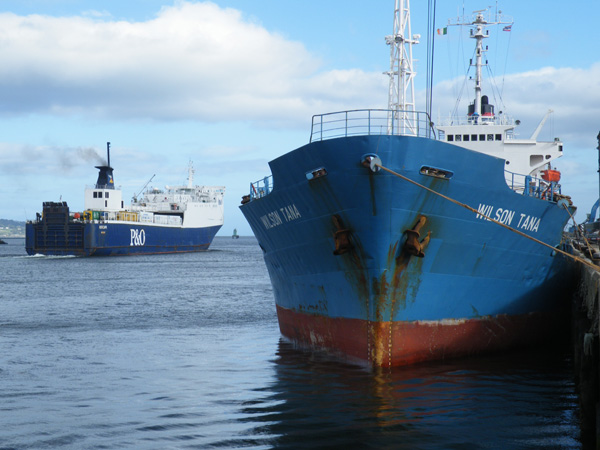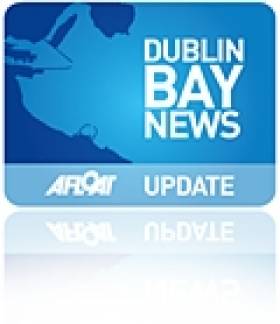Displaying items by tag: Mitsui Engineering Shipbuilding, Tamano Japan
Ships Meet In Dublin Port: Recall Collision in Dublin Bay
As the ro-ro ferry Norcape departed Dublin Port last Monday, on a routine sailing to Liverpool, the vessel passed the docked general dry-cargo bulker Wilson Tana. The vessels were involved in a collision in Dublin Bay, over 20 years ago, writes Jehan Ashmore.
On 18 February 1988 the vessels collided about a mile off the entrance to Dublin Port. The Norcape, was then under different ownership as B+I Line's 6,310grt Tipperary and the 4,694grt Wilson Tana, then named Sumburgh Head was owned by Norwegian shipping company Christian Salvesen.
Several small craft dashed to the scene as part of the rescue effort, fortunately the incident occurred close to the port and without loss of life or injury.
The bow of the Tipperary ruptured one of the Sumburgh Head holds, causing a large gash in hold No. 3 that led to over 3,500 tons of fertiliser spilling into the sea. The vessel was carrying in total 5,000 tonnes of the cargo from Rostock, then in the former East Germany.

Norcape (formerly B+I Line's Tipperary) and Wilson Tana (formerly Sumburgh Head) in Dublin Port on Monday. Photo J. Ashmore /ShipSNAPS
Also arriving at the scene were tugs to assist the disabled vessels. The Sumburgh Head was in need of more urgent attention having sustained heavy structural damage amidships to one of four cargo holds. Several attempts were made to pull Sumburgh Head free while the Tipperary used her bow thrusters and main engines in an attempt to pull away too.
After an hour the vessels parted, though air-sea rescue services were called as it was feared the Sumburgh Head was in a vulnerable situation. The vessel only developed a 10-degree list and limped into the port under towage. Tipperary was less damaged and managed to return to port under her own power.
Sumburgh Head received remedial attention with metal girders positioned across the gapping damaged hold. In comparison the Tipperary was less damaged except for a gash to the bow and several buckled bulbous bow plates. The ferry received repairs in the local dry-dock facility in Alexandra Basin.
The Sumburgh Head was built in 1977 at the Hashihama Zosen shipyard, Imabari in Japan. Incidentally, Tipperary was also built in Japan by Mitsui Engineering Shipbuilding, Tamano and launched in 1979. The newbuild was chartered to B+I Line to serve on a new Dublin-Fleetwood route jointly operated with P&O, using Tipperary's sister, Ibex.
In 1988, the route's UK port switched to Liverpool with Tipperary remaining on the route until sold to North Sea Ferries in 1989 and renamed Norcape. It is only this year that the vessel returned to Dublin-Liverpool for P&O (Irish Sea) completing a career circle.
As for Wilson Tana, the Maltese flagged bulker docked in Dublin after arriving from Gijon, northern Spain. For the next two days the vessels cargo of sand was unloaded at the Coal Quay before departing last night.




























































